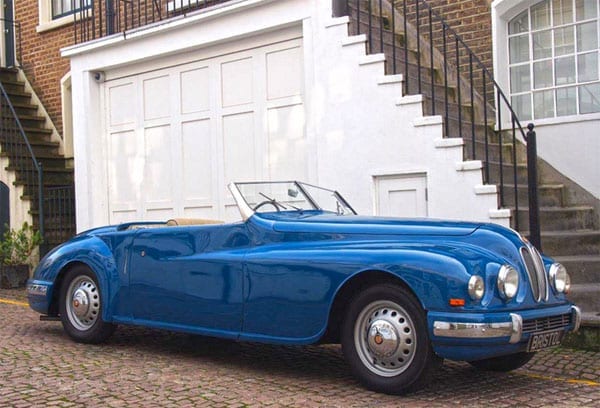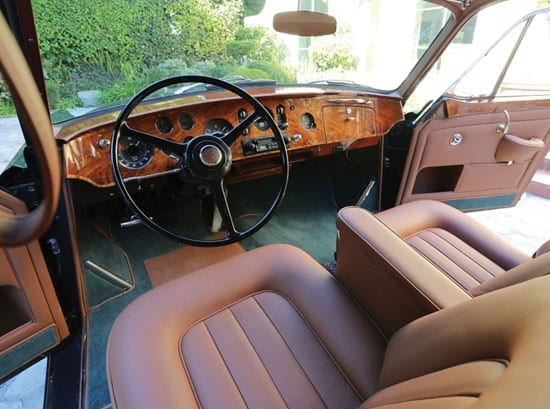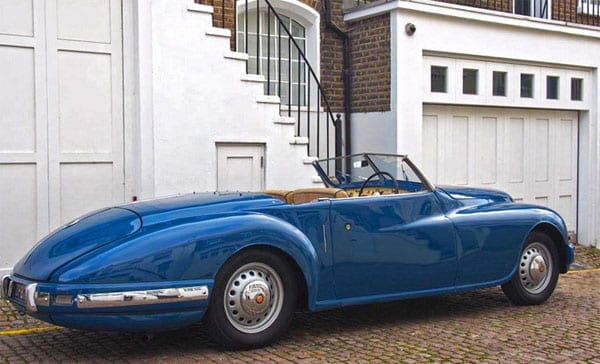Bristol Cars market a stunning 402 ‘Hollywood Special’ just as they prepare to move into a new showroom and launch their first new model since 2003
This year marks the seventieth anniversary of Bristol Cars and at a time just before the company unveils its new showroom in Kensington and launches its first new model since 2003, the firm is also marketing a truly stunning model in the form of a 1949 Bristol 402.



The car on offer, a drophead variant of the Bristol 401, is the sixth out of just twenty-two produced and was first owned by Prince Varnand Dhavah Chudadhu, a famed Spitfire pilot and nephew of King Vajiravudh Rama VI of Thailand. It was kept at his Berkshire residence until 1956 when it was taken to Northern Ireland by a new owner. Returned to England in 1984, the surf blue with cream hide interior car is described as being in a “good usable condition” but capable of undergoing “some sympathetic restoration”. It is priced at £175,000.
Bristol Cars, like most British motor manufacturers, itself is a company that suffered a rocky history in the second half of the twentieth century. The firm, founded in 1945, was originally part of the Bristol Aeroplane Company and produced some stunning hand-built vehicles between the 1940s and 1970s, somewhat lost its way in the 1990s and 2000s and was put into administration in 2011.
With a new owner in the form of Frazer Nash, Bristol is now heralding a new era. Last year, at the Concours of Elegance at Hampton Court Palace in London, Bristol Cars announced a new model for 2015 dubbed ‘Project Pinnacle’.
At the time, the firm’s chairman, Sir George White, commented:
“2015 will mark Bristol Cars’ 70th year, and these announcements underline today’s very exciting times at the company. Project Pinnacle signifies the re-birth of the brand with a design and character respectful of the company’s rich heritage in Great Britain – in aviation, commercial and luxury automotive – delivered with a modern approach to performance and comfort”.
“This car, along with the investments in Kensington and Brentford, not to mention the advanced development of an all-new super-luxury grand tourer, all make for a very bright and promising future for this company that I hold so dear”.
With notable owners past and present having included President Jimmy Carter, the restaurateur Jeremy King and the designer Paul Smith, Bristol has always been a firm that has attracted what The Telegraph have termed “the wealthy and the discreet”. Now, it seems, it is also a firm that is finally back on track.
Subscribe to our free once daily email newsletter here:










Such good news……………..404 always my favourite ……… and with the price of petrol declining…….
Delighted to hear that. A proper gentleman’s carriage, now that the likes of Bentley et al have become exceedingly vulgar.
Wonderful – long may this firm flourish.
I’ve seen this one in real life – an absolute beauty
My first job as a messenger boy and trainee ‘ Account exec ‘ in a Cardiff Advertising Agency in 1962, included bombing off to see clients in my Old Harrovian 28 year old boss’s BRG fixed head one of these beauties
People say that things aren’t like they were in the old days…….zzzzzzzzzzzzzzzz cough………
I think their original slogan was that a Bristol could take four gentlemen and their luggage on a trip round Europe Sadly I never knew more than two other gentlemen so I could never test this claim. I’ve seen one being restored. Their construction was pure craftsmanship.
The build quality of Bristol cars is truly third rate-even the lamps come from a Ford. Not surprised they went bust.
Why would you spend £140,000 plus on a car whose engine is American? I prefer a large Lexus myself
Well, you can’t buy class. The build quality of a Bristol is actually first class, each one individually built by hand, by craftsmen, not machines. A relatively tiny component like a “ford lamp” is the most sensible approach for a small manufacturer, as Ford would have spent the necessary millions getting such an ancillary component perfect, while the small bespoke manufacturer, in this case Bristol, concentrate on crafting the rest of the car. As for the engines, they weren’t some bog standard unit that you would find in a yank tank, they were commissioned specifically for Bristol with certain modifications to suit their own requirements. I know this as I am rebuilding a 1959 model 406 as we speak, I don’t see too many other “third rate” cars surviving for nearly 60 years…
Depends what you mean by class….
British cars my favourites – not necessarily a pus-basin at hand when looking into a 50 year old British car with leather interior.